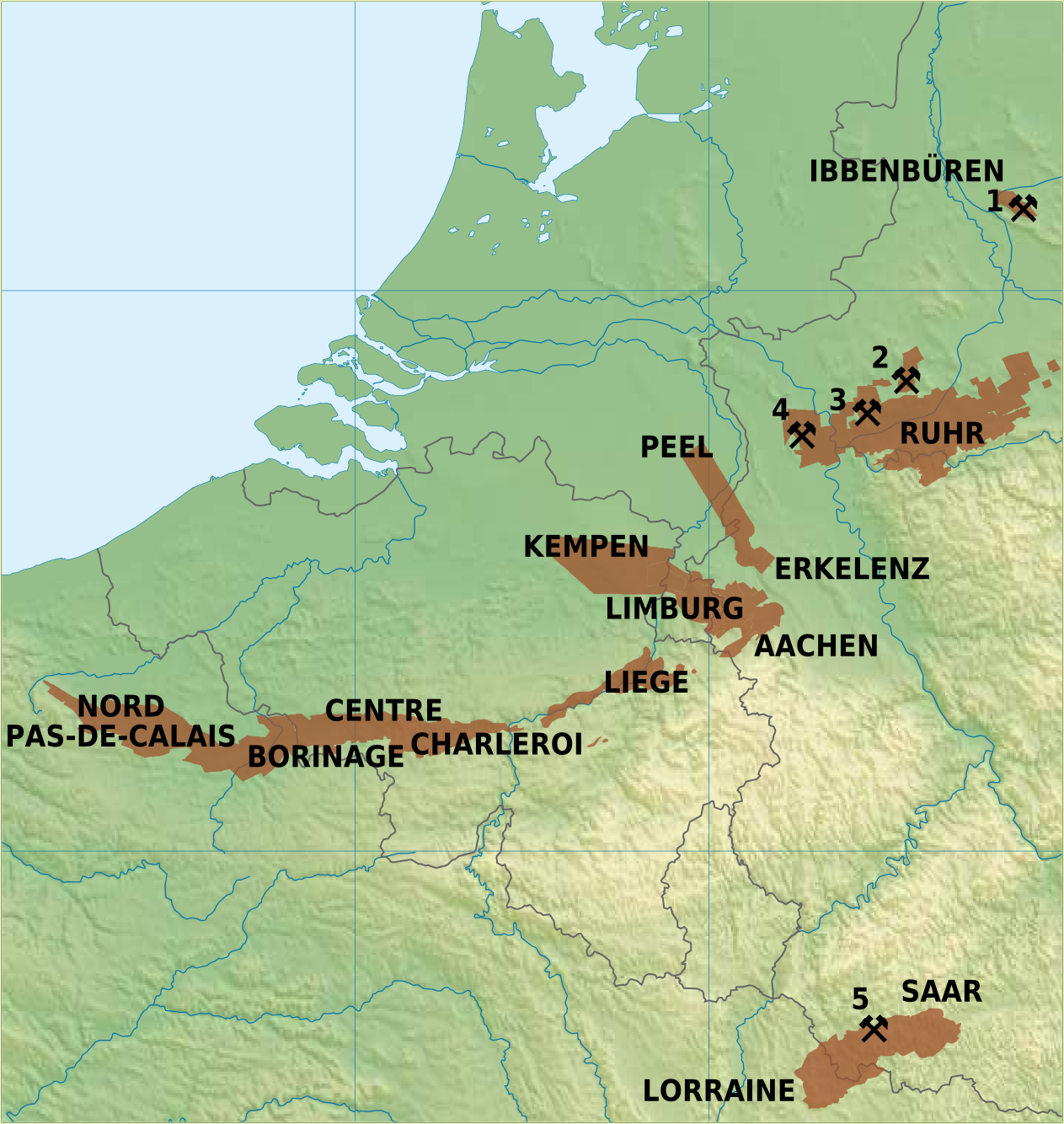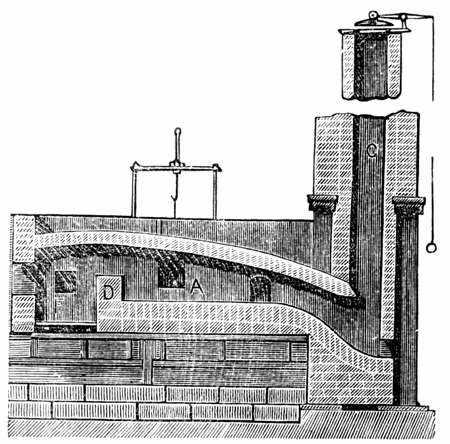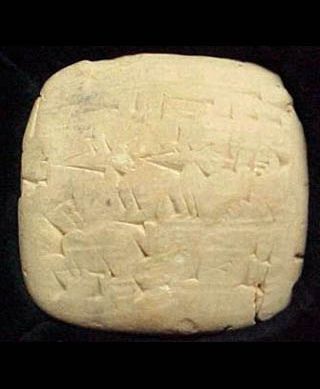|
Vosges Keuperian Coal Mining Basin
The Keuperian coal basin of the Vosges is part of the Vosges and Jura coal mining basins, coal basins of the Vosges and Jura. It was mined for coal between the early 19th century and the mid-20th century near the town of Vittel, in the western part of the Vosges Departments of France, department in eastern France. Halite, Rock salt, pyrite, and gypsum are other resources extracted from the same geological formation. Coal was discovered in Norroy in the 1820s. The industry peaked in the 19th century, with six concessions granted between 1829 and 1859 for exploiting the basin. The most active concession was that of Saint-Menge and Gemmelaincourt, where several hundred thousand tons of coal were extracted. This low-quality fuel, due to its high sulfur content, was reserved for local use. During the German military administration in occupied France during World War II, Occupation, shortages and local needs prompted renewed exploration, particularly by the Bureau de Recherches Géologiq ... [...More Info...] [...Related Items...] OR: [Wikipedia] [Google] [Baidu] |
Localisation - Bassin Houiller Keupérien Vosgien
Localization or localisation may refer to: Biology * Localization of function, locating psychological functions in the brain or nervous system; see Linguistic intelligence * Localization of sensation, ability to tell what part of the body is affected by touch or other sensation; see Allochiria * Neurologic localization, in neurology, the process of deducing the location of injury based on symptoms and neurological examination * Nuclear localization signal, an amino acid sequence on the surface of a protein which acts like a 'tag' to localize the protein in the cell * Sound localization, a listener's ability to identify the location or origin of a detected sound * Subcellular localization, organization of cellular components into different regions of a cell Engineering and technology * GSM localization, determining the location of an active cell phone or wireless transceiver * Robot localization, figuring out robot's position in an environment * Indoor positioning system, a networ ... [...More Info...] [...Related Items...] OR: [Wikipedia] [Google] [Baidu] |
Coal Basin
Coal mining regions are significant resource extraction industries in many parts of the world. They provide a large amount of the fossil fuel energy in the world economy. The People's Republic of China is the largest producer of coal in the world, while Australia is the largest coal exporter. Countries with the largest proven black coal reserves are the United States (250.2 billion tonnes), Russia (160.3 billion tonnes), Australia (147.4 billion tonnes), China (138.8 billion tonnes) and India (101.3 billion tonnes). A coal-mining region is a region in which coal mining is a significant economic activity. Coal-mining regions are often associated with the social, cultural and environmental impact of coal mining. Africa South Africa In South Africa coal is mined in several regions, mainly in the East Rand around Witbank, in the Vaal valley around the Vaal Triangle, the Waterberg in the Limpopo Province and at Dundee and Newcastle in northern KwaZulu Natal. South Africa is curr ... [...More Info...] [...Related Items...] OR: [Wikipedia] [Google] [Baidu] |
Lignite
Lignite (derived from Latin ''lignum'' meaning 'wood'), often referred to as brown coal, is a soft, brown, combustible sedimentary rock formed from naturally compressed peat. It has a carbon content around 25–35% and is considered the lowest rank of coal due to its relatively low heat content. When removed from the ground, it contains a very high amount of moisture, which partially explains its low carbon content. Lignite is mined all around the world and is used almost exclusively as a fuel for steam-electric power generation. Lignite combustion produces less heat for the amount of carbon dioxide and sulfur released than other ranks of coal. As a result, lignite is the most harmful coal to human health. Depending on the source, various toxic heavy metals, including naturally occurring radioactive materials, may be present in lignite and left over in the coal fly ash produced from its combustion, further increasing health risks. Characteristics Lignite is brownish-bl ... [...More Info...] [...Related Items...] OR: [Wikipedia] [Google] [Baidu] |
Keuper
The Keuper is a lithostratigraphic unit (a sequence of rock strata) in the subsurface of large parts of west and central Europe. The Keuper consists of dolomite, shales or claystones and evaporites that were deposited during the Middle and Late Triassic epochs (about ). The Keuper lies on top of the Muschelkalk and under the predominantly Lower Jurassic Lias or other Early Jurassic strata. The Keuper together with the Muschelkalk and the Buntsandstein form the Germanic Trias Group, a characteristic sequence of rock strata that gave the Triassic its name. "Muschelkalk (geology)", Britannica Online Encyclopedia, October 2010, webpage: EB-39 Exposure The Upper Triassic is well exposed in Swabia, Franconia, Alsace and Lorraine and Luxembourg; it extends from Basel on the east side of the Rhine into Hanover, and through England into Scotland and north-east Ireland; it appears flanking the central plateau of France and in the Pyrenees and Sardinia. The Keuper sequence i ... [...More Info...] [...Related Items...] OR: [Wikipedia] [Google] [Baidu] |
Mining
Mining is the Resource extraction, extraction of valuable geological materials and minerals from the surface of the Earth. Mining is required to obtain most materials that cannot be grown through agriculture, agricultural processes, or feasibly created Chemical synthesis, artificially in a laboratory or factory. Ores recovered by mining include Metal#Extraction, metals, coal, oil shale, gemstones, limestone, chalk mining, chalk, dimension stone, rock salt, potash, gravel, and clay. The ore must be a rock or mineral that contains valuable constituent, can be extracted or mined and sold for profit. Mining in a wider sense includes extraction of any non-renewable resource such as petroleum, natural gas, or even fossil water, water. Modern mining processes involve prospecting for ore bodies, analysis of the profit potential of a proposed mine, extraction of the desired materials, and final mine reclamation, reclamation or restoration of the land after the mine is closed. Mining ma ... [...More Info...] [...Related Items...] OR: [Wikipedia] [Google] [Baidu] |
Puddling (metallurgy)
Puddling is the process of converting pig iron to bar (wrought) iron in a coal fired reverberatory furnace. It was developed in England during the 1780s. The molten pig iron was stirred in a reverberatory furnace, in an Redox, oxidizing environment to burn the carbon, resulting in wrought iron. It was one of the most important processes for making the first appreciable volumes of valuable and useful wrought iron, bar iron (malleable wrought iron) without the use of charcoal. Eventually, the furnace would be used to make small quantities of specialty steels. Though it was not the first process to produce bar iron without charcoal, puddling was by far the most successful, and replaced the earlier potting and stamping processes, as well as the much older charcoal finery forge, finery and bloomery processes. This enabled a great expansion of iron production to take place in Great Britain, and shortly afterwards, in North America. That expansion constitutes the beginnings of the Ind ... [...More Info...] [...Related Items...] OR: [Wikipedia] [Google] [Baidu] |
Iron
Iron is a chemical element; it has symbol Fe () and atomic number 26. It is a metal that belongs to the first transition series and group 8 of the periodic table. It is, by mass, the most common element on Earth, forming much of Earth's outer and inner core. It is the fourth most abundant element in the Earth's crust, being mainly deposited by meteorites in its metallic state. Extracting usable metal from iron ores requires kilns or furnaces capable of reaching , about 500 °C (900 °F) higher than that required to smelt copper. Humans started to master that process in Eurasia during the 2nd millennium BC and the use of iron tools and weapons began to displace copper alloys – in some regions, only around 1200 BC. That event is considered the transition from the Bronze Age to the Iron Age. In the modern world, iron alloys, such as steel, stainless steel, cast iron and special steels, are by far the most common industrial metals, due to their mechan ... [...More Info...] [...Related Items...] OR: [Wikipedia] [Google] [Baidu] |
Brewery
A brewery or brewing company is a business that makes and sells beer. The place at which beer is commercially made is either called a brewery or a beerhouse, where distinct sets of brewing equipment are called plant. The commercial brewing of beer has taken place since at least 2500 BC; in ancient Mesopotamia, brewers derived social sanction and divine protection from the goddess Ninkasi. Brewing was initially a cottage industry, with production taking place at home; by the ninth century, monasteries and farms would produce beer on a larger scale, selling the excess; and by the eleventh and twelfth centuries larger, dedicated breweries with eight to ten workers were being built. The diversity of size in breweries is matched by the diversity of processes, degrees of automation, and kinds of beer produced in breweries. A brewery is typically divided into distinct sections, with each section reserved for one part of the brewing process. History Beer may have been known in N ... [...More Info...] [...Related Items...] OR: [Wikipedia] [Google] [Baidu] |
Lime Kiln
A lime kiln is a kiln used for the calcination of limestone (calcium carbonate) to produce the form of lime called ''quicklime'' (calcium oxide). The chemical equation for this reaction is: CaCO3 + heat → CaO + CO2 This reaction can take place at anywhere above , but is generally considered to occur at (at which temperature the partial pressure of CO2 is 1 atmosphere), but a temperature around (at which temperature the partial pressure of CO2 is 3.8 atmospheres) is usually used to make the reaction proceed quickly.Parkes, G.D. and Mellor, J.W. (1939). ''Mellor's Modern Inorganic Chemistry'' London: Longmans, Green and Co. Excessive temperature is avoided because it produces unreactive, "dead-burned" lime. Slaked lime (calcium hydroxide) can be formed by mixing quicklime with water. History Pre-pottery Neolithic In plaster, proto-pottery, and mortar Because it is so readily made by heating limestone, lime must have been known from the earliest times, and all th ... [...More Info...] [...Related Items...] OR: [Wikipedia] [Google] [Baidu] |
Plaster
Plaster is a building material used for the protective or decorative coating of walls and ceilings and for moulding and casting decorative elements. In English, "plaster" usually means a material used for the interiors of buildings, while "render" commonly refers to external applications. The term stucco refers to plasterwork that is worked in some way to produce relief decoration, rather than flat surfaces. The most common types of plaster mainly contain either gypsum, lime, or cement,Franz Wirsching "Calcium Sulfate" in Ullmann's Encyclopedia of Industrial Chemistry, 2012 Wiley-VCH, Weinheim. but all work in a similar way. The plaster is manufactured as a dry powder and is mixed with water to form a stiff but workable paste immediately before it is applied to the surface. The reaction with water liberates heat through crystallization and the hydrated plaster then hardens. Plaster can be relatively easily worked with metal tools and sandpaper and can be moulded, either on ... [...More Info...] [...Related Items...] OR: [Wikipedia] [Google] [Baidu] |
Catchment Area
A catchment area in human geography, is the area from which a location, such as a city, service or institution, attracts a population that uses its services and economic opportunities. Catchment areas may be defined based on from where people are naturally drawn to a location (for example, a labour catchment area) or as established by governments or organizations such as education authorities or healthcare providers, for the provision of services. Governments and community service organizations often define catchment areas for planning purposes and public safety such as ensuring universal access to services like fire departments, police departments, ambulance bases and hospitals. In business, a catchment area is used to describe the influence from which a retail location draws its customers. Airport catchment areas can inform efforts to estimate route profitability. A health catchment area is of importance in public health, and healthcare planning, as it helps in resource allocat ... [...More Info...] [...Related Items...] OR: [Wikipedia] [Google] [Baidu] |
Haute-Saône Keuperian Coalfield
Haute-Saône (; Frainc-Comtou: ''Hâte-Saône''; English: Upper Saône) is a department in the Bourgogne-Franche-Comté region of northeastern France. Named after the river Saône, it had a population of 235,313 in 2019.Populations légales 2019: 70 Haute-Saône INSEE Its is ; its sole is [...More Info...] [...Related Items...] OR: [Wikipedia] [Google] [Baidu] |






